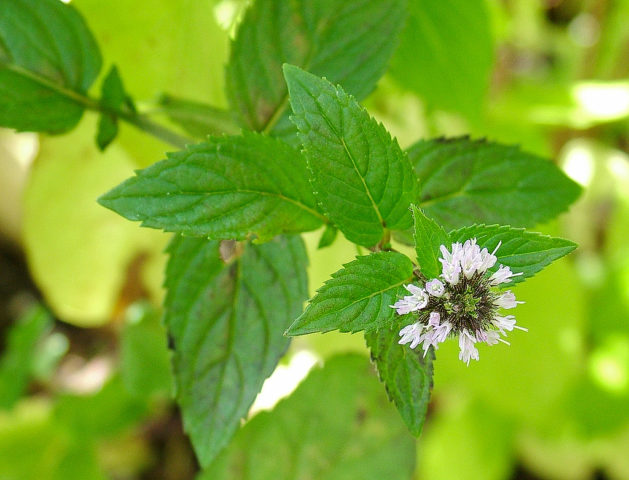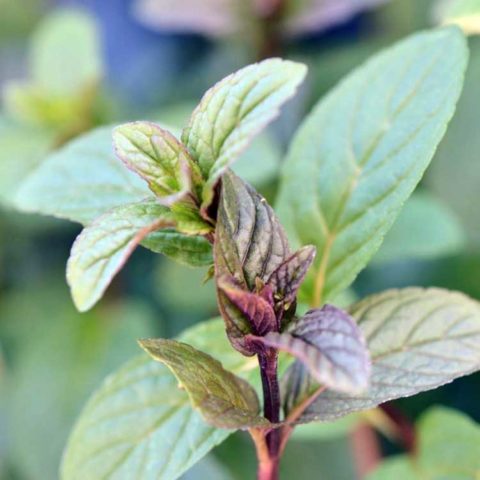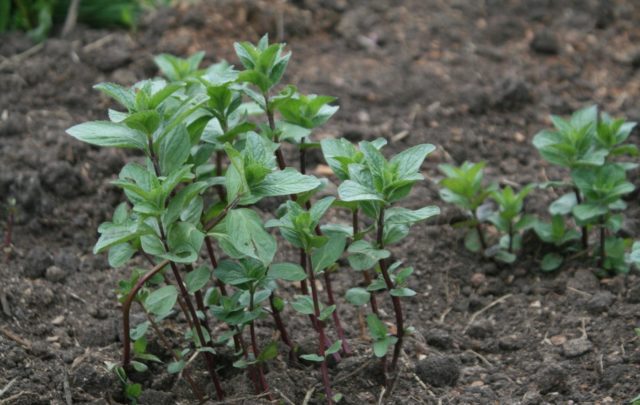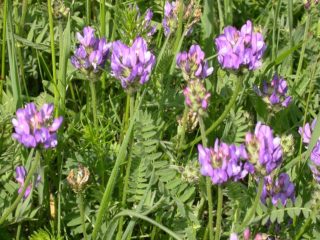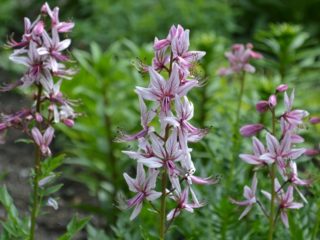Content
Peppermint (Mentha piperita) belongs to the genus Mint from the family Lamiaceae or Lamiaceae. Its natural habitat is gardens and industrial plantations for growing essential oil crops. This is an artificially bred species obtained from crossing Watermint with Spearmint.
The culture was isolated in southern England in 1696. In 1921, it was first included in the British Pharmacopoeia, a collection of documents regulating the requirements for medicinal raw materials.
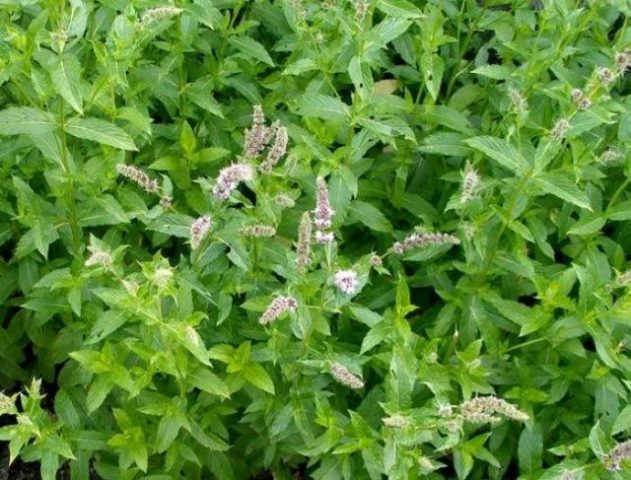
Peppermint flowers are located at the top of the shoots
Botanical description of peppermint
Peppermint is a perennial rhizomatous crop with a herbaceous aerial part that dies off in the winter. The erect, tetrahedral stems are hollow, branch from the base, and are densely covered with foliage. The height of peppermint depends on cultivation and care, climatic conditions, mechanical composition and soil fertility, and variety. It ranges from 30 cm to 1 m.
The leaves are paired, located opposite, have the shape of an elongated ovoid (egg), a sharp tip and a serrated edge. The lower part of the plate is always noticeably lighter than the upper part, the petioles are short. The stems and leaves are usually glabrous, but may be covered with a few hairs.
The flowers are small, two-lipped, located at the ends of the shoots. They are collected in half-whorls, forming an intermittent spike. The color depends on the variety, soil composition and lighting, and varies from mauve to purple.
Like other hybrids, the flowers are mostly sterile. Therefore, growing peppermint from seeds is rarely successful. Despite this, the crop is an excellent honey plant.
Flowering usually begins in June and continues until August. In the southern regions and Ukraine, cutting off the top part of mint when the buds begin to open can provoke a second wave of vegetation. This is exactly what they do on industrial plantations to get 2 harvests.
The rhizome is horizontal, woody, white, with a large number of thin fibrous appendages, located at a depth of up to 8 cm. On excessively wet or dense soils it comes to the surface.
You can clearly see what peppermint looks like in the photo.
Aroma and classification of peppermint
Peppermint owes its strong cooling aroma to its high, much higher content of essential oils and menthol than other types. The main amount of volatile substances is concentrated in flowers and leaves. There are so few of them in the stems that they have no medicinal properties and are useless in cooking.
There are two varieties of peppermint:
- White, with delicate light green leaves and shoots, delicate aroma. It is often called French and is used in cooking and the perfume industry.
The variety is distinguished by its soft green hue and delicate aroma.
- Black mint is distinguished by its dark green leaves and anthocyanin veins and shoots. Its aroma is harsher and sharper, and the content of menthol and essential oils is much higher than in white. It serves as a raw material for pharmaceutical production.
Black peppermint is easily recognized by the veins on its leaves.
When creating new varieties of peppermint that are of industrial importance, breeders work in two directions:
- Breeding cultivars that contain the maximum amount of menthol. They are planted freely, since most of the substance is concentrated in the lower leaves. And they tend to fall off when shaded.
- Creation of varieties with a high content of aromatic oils, carotene, other vitamins, and organic acids. They are used more in the culinary and perfume industries. But they are also used for medicine - the beneficial properties of mint, recognized by official medicine, are not limited to menthol.
Where does peppermint grow?
Peppermint is planted wherever there is fertile soil, the possibility of watering, and enough warmth - from Africa and Australia to the Baltic states and the Far East. It is grown as an industrial crop in more than 30 countries, including Russia (Stavropol region).
The demand for dried and fresh peppermint is constantly increasing, and raw materials are purchased at high prices. Growing the crop has become a profitable agribusiness in regions with warm climates.
Meaning of Peppermint
In peppermint, developed at the end of the 17th century, the content of essential oils in the leaves did not exceed 2-3%. In modern varieties there is much more volatile aromatic substance - 5% or more. They are grown on an industrial scale, menthol and other components are isolated, and dozens of medications are produced, including Validol, Menovazin, and Pectusin.
In addition to the pharmaceutical industry, peppermint is indispensable in the production of hygiene products - toothpastes, soaps, shampoos, lotions. The culture is widely used for the production of perfumes.
Peppermint has taken one of the leading places among the spices of many national cuisines, including Mediterranean and Moroccan. Aromatherapists, traditional healers, and psychics who use herbs in their practice cannot do without it.
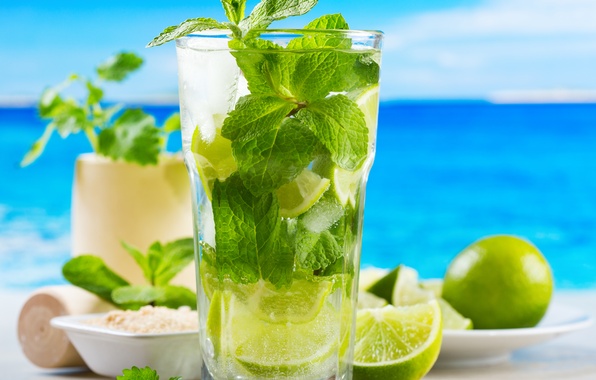
A Mojito cocktail cannot be made without peppermint.
How does peppermint propagate?
The culture is a hybrid and reproduces vegetatively. When growing peppermint at home or in the country, the planting material is:
- fresh rhizomes dug up before the crop begins to germinate in the spring;
- bushes divided into parts during transplantation;
- mint in containers or bare root, purchased at a nursery or market;
- seedlings - shoots that have just emerged from the ground with 2-3 pairs of leaves about 5 cm high;
- rooted green cuttings;
- layering.
The last two methods are unproductive - the crop grows quickly in favorable conditions, literally after a year the planting material can be shared with neighbors and friends. They are used in the following cases:
- During the snowless, cold winter, the plants froze, leaving only a few bushes;
- It’s not possible to get planting material, but you bought a bunch of peppermint with strong fresh shoots at the market or supermarket (reproduction is not always possible, but it’s worth a try);
- if they want to practice growing more valuable crops, or get children interested in gardening.
On industrial plantations, peppermint is planted in two ways:
- mechanized - fresh rhizomes;
- manually - seedlings.
Features of growing peppermint from seeds
Peppermint is a hybrid. The crop blooms well, but produces very few seeds, and most of them are sterile. They are of interest only to breeders when developing new varieties.
It is unknown where the seeds sold in every garden center and store come from in such quantities. You can plant them, but at best, some other mint will grow. It is possible that it will have bare stems and narrow leaves, differ from nearby varieties by having a higher menthol content or simply a strong odor. Water, field, and spearmint are often passed off as peppermint. Or maybe nothing will grow at all.
How to Plant Peppermint
Peppermint is easy to plant; the crop quickly takes root and grows. When only a few bushes are needed on a site, they have to be contained the very next year. If development is slowed down, it is necessary to look for the cause.
Recommended timing
In the Middle Zone and the North-West, peppermint is planted in April-May or August. In the south, the best time is early autumn.
Containerized specimens in temperate climates can be transferred to a garden bed or flowerbed throughout the growing season. In the south in the summer the heat interferes with this - the crop will need to be shaded for the first 3 weeks or the planting will need to be postponed until autumn.
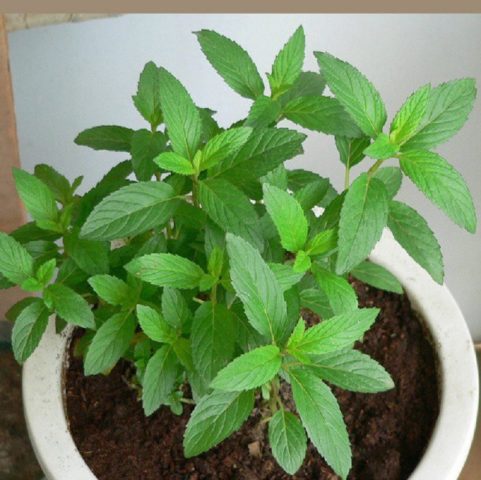
Peppermint can grow in a container until the end of the season.
Site selection and soil preparation
Mint grows on almost any soil. Their acidity can range from 5 to 8, ideally 6-7. But the mechanical composition is of great importance. On sandy loams, the crop constantly lacks moisture, the rhizomes fall through, and in the spring shoots appear later than expected.
Compact soils are an even bigger problem. Mint rhizomes cannot develop normally and are literally squeezed out to the surface, where they quickly dry out and the culture dies.
Ideal site for planting mint:
- smooth;
- lowland;
- weedless;
- with close standing groundwater;
- protected from strong winds in summer and covered with a thick layer of snow in winter;
- sunny in temperate or cool climates, light partial shade in the south;
- with loose, organic-rich neutral or slightly acidic soil.
The best predecessors of mint are cereals, legumes, corn, and vegetables. In one place the culture can grow up to 7 years. But this is advisable only when the purpose of mint is purely decorative. To obtain high-quality medicinal and culinary raw materials, the crop is replanted every 3 years.
The bed is dug up at least 2-3 weeks in advance using a shovel, all clods are broken up. The roots of weeds are selected and, if necessary, peat, sand, humus, and starting fertilizers are added. If it was not possible to loosen the area in advance, it is rolled or compacted in another way - using a board, a tamper or abundant watering.
The most common mistake when planting mint
This crop is easy to plant, transport from place to place, and propagate vegetatively. Failures are usually due to ignorance or carelessness on the part of gardeners. For mint to take root well, the rhizomes must contain 70-80% moisture. Immediately after digging, the water begins to evaporate. Already at 60% moisture, the germination ability of the crop drops sharply.
To avoid this, it is enough to keep the mint you bought at the market with bare roots in water for several hours.
Immediately after digging up the mint, it is recommended to immerse its root in water and keep it there until planting. You should take out one plant at a time.
When mint is planted in furrows, they are first watered abundantly. Or rather, they fill it with water. The crop is planted almost in the mud. The root is partially immersed in wet soil and does not have time to dry out.
Planting peppermint in open ground
The area is prepared and compacted.Mint roots are saturated with liquid and immersed in water. You can start planting:
- Make a wide furrow about 10 cm deep.
- Fill it with water.
- Allow the liquid to be absorbed.
- Arrange rhizomes or mint seedlings in a line.
- Cover with soil.
- Compact.
If several stripes are needed, the distance between the rows is 50-60 cm. A small amount of mint can be planted in separate holes.
During the first 3 weeks, the crop is watered regularly, preventing the soil from drying out. When shoots appear, they weed by hand and peel the top layer of soil.
How to Grow Peppermint
Once planted in a place suitable for the culture and managed to take root, the plant requires virtually no care. If the soil is fertile and has been pre-filled with organic matter, mint is fed only at the end of the season with potassium-phosphorus preparations.
Next spring, at the beginning of the growing season, you can give nitrogen fertilizer. But you can’t be zealous, especially if the crop is grown for cooking or treatment. Excess nitrates reduce the content of essential oils and increase the risk of developing fungal diseases.
Mint is grown without shelter, but in a snowless winter it can freeze. In cold regions, it is better to protect the crop with spruce branches or fallen leaves of healthy fruit trees.
Watering schedule
Peppermint is very demanding on soil and air humidity. Even after short-term drying, the crop quickly loses its leaves. On the other hand, water should not stand under the bushes, otherwise the roots and greens will begin to rot.
In summer, mint is moistened 2-3 times a week, but you need to focus on the weather and your own conditions - the composition of the soil, the illumination of the area.The position of the bed is of great importance - at higher elevations daily watering may be required, in lowlands they need less.
Weeding and loosening the soil
The soil under peppermint should be loose. But you can peel it while the crop has not grown - horizontal rhizomes quickly recover from damage, but there is no need to disturb them again. Therefore, when planting, they attach such great importance to the mechanical composition of the soil.
Weeds are omnipresent. They grow inside mint bushes and require hand weeding. It is easiest to care for a bed in which the crop grows in stripes. The row spacing is loosened and weeded completely with a hoe or flat cutter.
After 3 years, when the soil is compacted and the roots of the weeds and mint are intertwined, the crop is transferred to a new location.
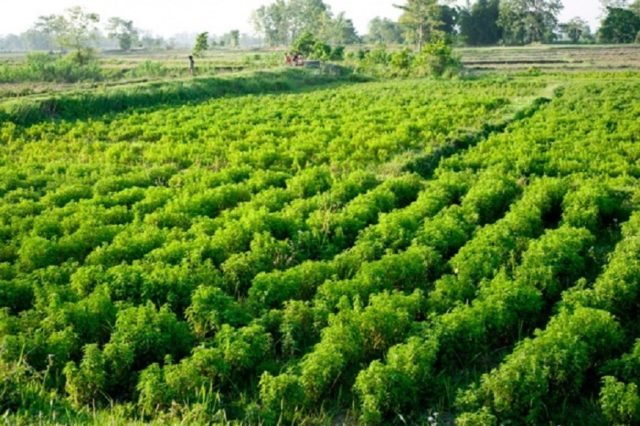
This is what a small field of peppermint looks like
Pests and diseases of peppermint
While planting and caring for peppermint in open ground is easy and not burdensome, pests and diseases pose a real problem. It would seem that an essential oil crop should repel insects and destroy harmful spores. Unfortunately, this doesn't work with mint.
The crop has a lot of pests. The main ones are aphids, mint flea beetles, scale insects, leafhoppers, mites, green leaf beetles, weevils, mint leaf beetles, wireworms, and pennies.
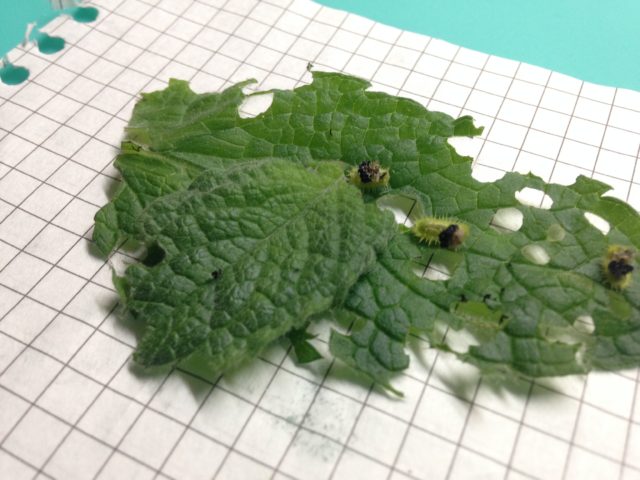
Mint leaves eaten away by pests
To destroy and repel insects in an area intended for collecting medicinal and culinary raw materials, you need to use folk remedies. A crop grown for purely decorative purposes can be treated with insecticides, but flowers and leaves should not be picked after this.
Peppermint diseases - verticillium wilt, spotting, powdery mildew, rust, anthracnose, mycoplasma (overgrowth).
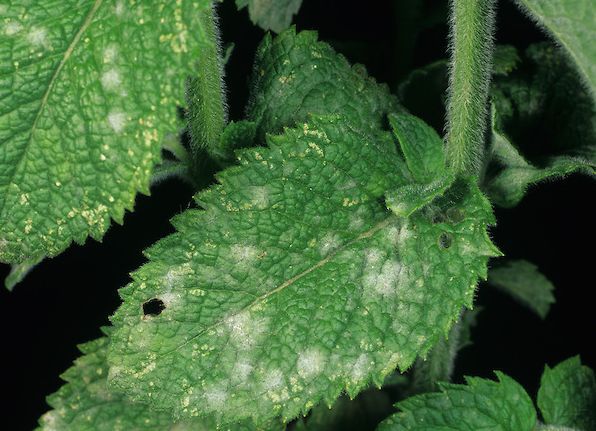
Mint leaves affected by powdery mildew
For preventive purposes, plant debris is removed from the site at the end of the season and replanted more often.
When to collect and how to dry peppermint
The largest amount of nutrients and essential oil in peppermint is concentrated at the beginning of flowering. On industrial plantations, they take advantage of this and harvest the crop twice, mowing the top part as soon as the buds begin to open.
You can pick fresh leaves for tea throughout the growing season. Those who like the smell of menthol take the lower ones. Those who prefer a more delicate aroma collect flowers and leaves from the top of the shoots.
When to Harvest Peppermint for Drying
In most of Russia, the time to dry peppermint extends from June to July. In the south, if you cut off the greens and flowers of a crop at the beginning of summer, you can expect a new harvest by August.
Preparation of mint for medicinal purposes and cooking is carried out in the same time frame. But for tea and sauces, you don’t need to use the lower part - there is a lot of menthol there, the smell and taste will be too strong. For medicinal preparations, on the contrary, it is this substance that is of greatest importance.
Harvesting is carried out in the first half of the day in hot, dry weather. The entire crop is cut off if it is to be used to prepare medicinal mixtures. For culinary needs, you can take only the upper part.
Drying peppermint
It is not recommended to wash mint before sending it for drying - this will reduce the quality of the raw material. If it is very dirty after heavy rain or inaccurate watering, 2-3 days before harvesting the greenery, wash the bush with water from a hose or watering can.
Cut shoots can be harvested whole, tied in bunches, or flowers and leaves can be torn off. Peppermint raw materials are dried at a temperature of 20-30 °C.The bunches are hung freely, and the leaves are laid out on clean white paper in a well-ventilated room, away from light.
It is not recommended to use the attic in hot weather. The drying temperature of peppermint there will be noticeably higher, and the raw material will lose a significant part of its essential oils.
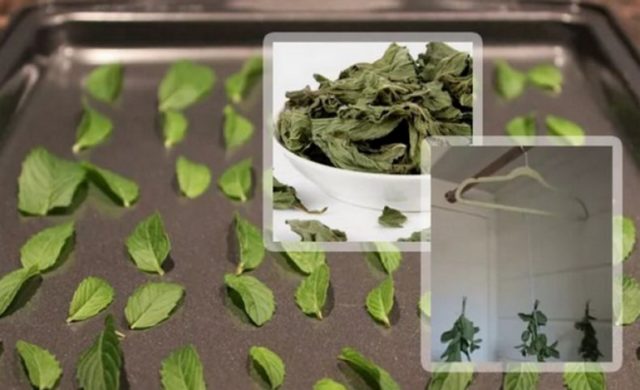
Peppermint can be dried in bunches or individual leaves.
Storing Peppermint
If the mint has been dried in bunches, you should not pick off the leaves to reduce the volume - this will again lead to the loss of nutrients. They should be stored whole, in tightly closed cardboard boxes at room temperature in a dry place. Leaves are taken as needed and in such quantities as to be used at a time.
Peppermint separated from the stems is poured into glass jars and tightly closed with a lid. Keep at room temperature without access to light and moisture.
Conclusion
Peppermint is useful in the kitchen and in the treatment of many diseases. The culture takes root easily and does not require special care. Even the smell of aromatic grass can calm you down, relieve fatigue and improve your mood.
